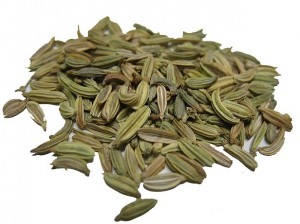 It’s fun to take some time and research the history of ingredients we use in our sausages here at Isernio’s. We thought we’d start out with fennel seed – where would we be without this little kernel? We certainly wouldn’t be making traditional Italian sausages, as fennel seed is really the cornerstone ingredient in a true Italian style sausage. The flavor is unmistakable – a slightly sweet, licorice flavor that adds that distinctly Italian taste to our sausage.
It’s fun to take some time and research the history of ingredients we use in our sausages here at Isernio’s. We thought we’d start out with fennel seed – where would we be without this little kernel? We certainly wouldn’t be making traditional Italian sausages, as fennel seed is really the cornerstone ingredient in a true Italian style sausage. The flavor is unmistakable – a slightly sweet, licorice flavor that adds that distinctly Italian taste to our sausage.
The fennel seed comes from, of course, the fennel plant. Aside from being used in sausages, t he seed is often used in Mediterranean vegetable or fish dishes, baked into bread, or even used in tea. The bulb of the plant is absolutely delicious – sweet and crunchy – and is often sautéed or baked with meat or vegetables, or julienned raw into salads or sandwiches.
he seed is often used in Mediterranean vegetable or fish dishes, baked into bread, or even used in tea. The bulb of the plant is absolutely delicious – sweet and crunchy – and is often sautéed or baked with meat or vegetables, or julienned raw into salads or sandwiches.
Fennel originated in Europe and has long been revered for its medicinal purposes, in addition to its culinary appeal. For centuries it has been recommended as a digestive aid (by chewing the seeds or brewing into tea).
In medieval times, hung over doors, fennel was thought to ward off evil spirits. Fennel has also been used as an appetite suppressant; Puritans in America used to bring handkerchiefs filled with the seeds to church to nibble on, to stave off hunger, and so the seeds were often called “meetin’ seeds.” (although we recommend eating our sausage – including the fennel seeds – for maximum hunger satisfaction!)
Medicinal and spirit-warding abilities aside, we still think the best way to use fennel is in creative and delicious recipes. Frank Isernio’s favorite ways to use fennel (besides sausage of course) include:
- Braised as a side dish
- Sliced into salads
- Grilled (cut into wedges, coat in olive oil and grill)
- Use in place of celery in almost anything – it adds an extra aromatic touch to the dish
- Eat raw, sliced, drizzled in olive oil and sprinkled with a little salt (this was one of his father’s favorite ways to eat it too)
- Use fennel pollen (in powdered form – find it in spice shops) sprinkled on pork
- The green fronds of the fennel plant are excellent with fish. Try them in a fish soup base, or stuffed into the cavity of fish that will be roasted. Also wonderful chopped into fine pieces and sprinkled on salads
- When using fennel seeds for anything, be sure to crack them with a mortar and pestle to bring out the best flavor
Here’s a salad recipe from Margaret Isernio that utilizes fresh sliced fennel as well as the seeds. Give this a try as a first course during your next dinner party:
Dressing:
- 2 Tbsp. fresh orange juice
- 1 Tbsp. white wine vinegar
- 1 Tbsp. minced shallot
- 1 tsp. fennel seed, crushed in a mortar
- 1 tsp. sugar
- 1/2 tsp. salt
- 1/4 tsp. fresh ground black pepper
- 1 Tbsp. good olive oil
Salad:
- 1 bunch fresh Arugula or 4 cups bulk
- 1 cup fresh fennel shaved or sliced very thin (I use a truffle shaver)
- 2 medium size navel oranges or blood oranges, peeled and sliced into 1/4″ rounds
Salad Option Additions:
- 1/4 cup Radishes, thinly sliced
- 1/4 cup oil cured black olives, slivered
- shaved Pecorino Romano cheese
Directions: Whisk the Dressing ingredients in a small bowl and set aside. You can do this ahead and leave out until right before serving.
Clean the arugula leaves and place in a large bowl, add the shaved fennel & radishes, if using. Add the dressing and toss to coat well. Lay down the orange slices on a large platter, or individual plates and top with the salad. Garnish with olives and/or shaved Pecorino Romano.
What are some of your favorite ways to use fennel? We’d love to hear your ideas and recipes!


Comments are closed.